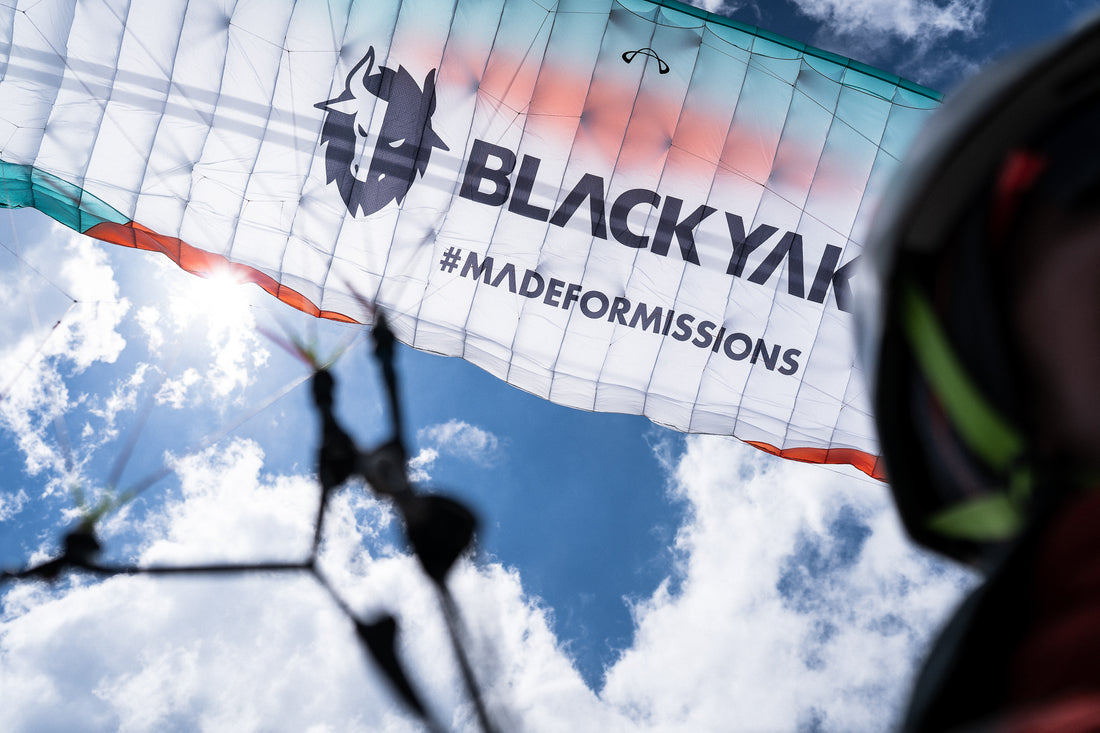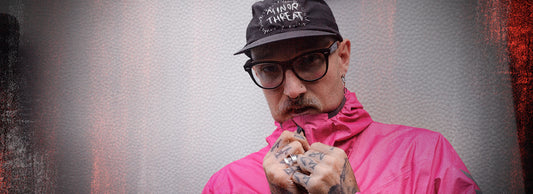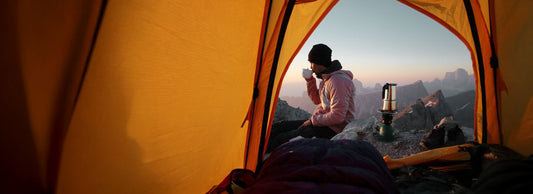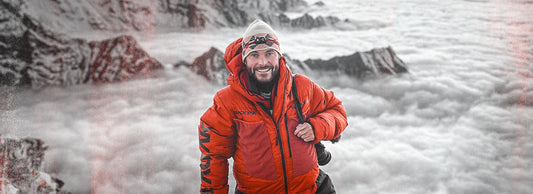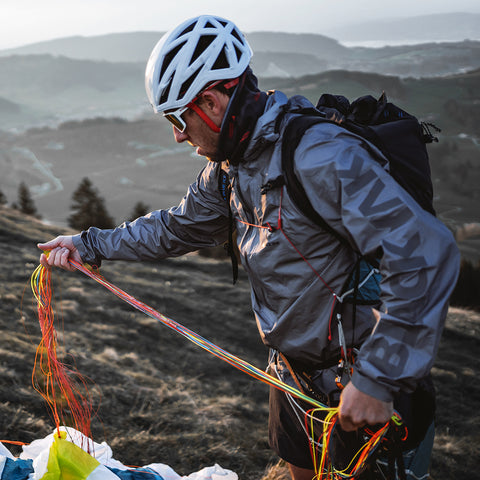Paragliding in winter, is that possible?
I'm Sepp Inniger, 26 years old, I live in Kandersteg, Switzerland and I'm a paragliding test pilot and Blackyak athlete.
I am often asked how I can do my job as a test pilot in winter, since paragliding is not possible at this time of the year. In this blog entry I would like to refute this myth and go into more detail on this topic.

How it all began:
The Bernese Oberland where I grew up is known for paragliding.
Some of the world's best paraglider pilots live in our valley. Not least because of them I came to this sport.
Almost 10 years ago I was mainly out and about in alpine terrain, on rocks, or on touring skis.
There I always imagined being able to paraglide from the summit down into the valley one day.
I took the first step towards fulfilling this dream when I started my apprenticeship in 2016. My passion was soon sparked and paragliding became an integral part of my life.
Now that I knew what it takes to start at the summit and slide down into the valley, I tried it right away on an alpine tour from the Doldenhorn (3638 m) - it was an indescribable feeling. Since I followed the top pilots from the region, I came into contact with the Redbull X-Alps, probably the biggest and toughest paragliding race in the world, early on.
The aim of this race is to get from Salzburg over the Alps to Monaco and this only with a paraglider or on foot. To see what is possible with a piece of fabric and a few lines is just great and fascinates me enormously. Through my talent and many happy coincidences, I was able to gain a foothold in the competitive scene and make great strides.
After 6 years of flying, I can now call this my profession. I complete around 1000 flights a year and spend around 500 hours in the air. Of course, I don’t only come across this large number of flights in summer, but also in winter, but more on that below.
What it takes to fly:
Basically, all you need for paragliding is a launch site that's steep enough to take off, a light updraft coming up the slope, and good visibility. These are the minimum requirements so that we can take off with the paraglider. If these conditions are given, a flight in summer as well as in winter is possible.
In winter, of course, the snow and cold conditions are a bit more demanding. Since the earth's surface is mostly covered with snow, hardly any thermals, ie warm rising air, can develop. For us pilots, less thermal also means shorter flight times. But winter also offers us paraglider pilots advantages. Many ski lifts are open, they can easily transport us to the launch sites. But we can also fly on skis and make the tough descent into the valley very easy in the evening.
With so-called mini wings or speed flyers, these are small special paragliders, you can fly low over the snow or even ski while actually flying. As soon as the sun gets stronger in spring from around February / March and the snow in the forests slowly melts, we always try to use every little thermal updraft and stay in the air as long as possible.
Cold hands are part of it.
On longer flights, the cold is a big challenge. The hardest part is keeping your hands warm during the flight. There are various tricks with heating or overgloves. I prefer the latter because I want to wear finger gloves when starting so I can move my fingers freely at all times.
Once in the air, I take the overgloves out of the side pocket of my harness (seat). These are 100% windproof and heat-insulating. With the gloves I can stay in the air for a long time in spring, even at low minus temperatures, and fly over our snow-covered mountain peaks. On such flights, I usually don't fly with the classic seat harness, but fly in a recliner harness.
With a recumbent harness, I can put my legs in a bag, usually made of neoprene, after take-off to protect them from the wind. Despite that, in winter I wear warm ski pants, such as the Saltoro Pants, or additional insulating pants, such as the Latok, over my normal pants. On the upper body I use the layering principle. At the bottom there is usually a long-sleeved shirt made of merino wool, followed by a mid-layer such as the Chumbu Fleece. Then a warm down jacket and finally a Gore-Tex jacket to keep the wind out.
It always feels much colder for us - wind chill.
I start in spring at 1000m above sea level at 5°. In the air at 30km/h, I have the feeling that the temperature is 0°. This phenomenon is called wind chill. It describes the difference between the measured air temperature and the felt temperature depending on the wind speed.
If I now climb to 3000m above sea level with good thermals on a good day of flying, which is not uncommon in the Alps, I theoretically have -15° there due to the difference in altitude. With the wind chill factor, however, the temperature feels like -26°. For me, that means that I always have to calculate what the temperature will be high up on long, high flights.
Flying in winter is therefore possible despite some challenges and can also lead to unforgettable experiences.
-
MEN'S CHAMAR FLEECE ROUNDNECK BASELAYER LONGSLEEVE
The CHAMAR FLEECE ROUNDNECK BASELAYER LONGSLEEVE combines comfortable Micro G...Regular price 90,00 €Regular priceUnit price per

